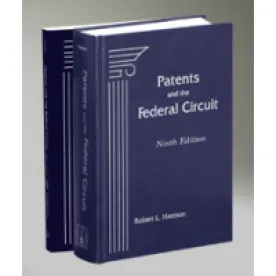The US Court of Appeals for the Federal Circuit affirmed a district court’s claim construction of the term “end plate” that required a flat external surface, and its construction of the term “protrusion extending outwardly from the end plate” that required a demarcation between the protrusion and end plate. The Federal Circuit therefore prohibited an infringement theory premised on an end plate being inside the accused product and a protrusion that was not demarcated from the end plate. Neville v. Foundation Constructors, Inc., Case No. 20-1132 (Fed. Cir. Aug. 27, 2020) (Chen, J.).
Neville owns patents directed to foundation piles, which are tubular structures placed into the ground to provide stability for the foundations built over them. One set of claims requires an “end plate having a substantially flat surface disposed perpendicular to the centerline of the tubular pile.” Another set of claims requires “at least one protrusion extending outwardly from the end plate.”
Neville filed a lawsuit alleging that Foundation Constructors’ pile tips infringed the patents. The district court granted summary judgment of non-infringement, reasoning that the plain meaning of “end plate having a substantially flat surface” did not encompass “an interior surface facing into the rest of the pile tip.” Examining the intrinsic record, the district court concluded that “the patent applicant intended the ‘substantially flat surface’ of the end plate to refer to the side of the end plate facing outward.” The court found that the accused products did not have such an “end plate.” As to claims requiring a protrusion extending outwardly from the end plate, the court reasoned that “[b]ecause the end piece of the accused pile tip is a single, conically-shaped piece, there is not a demarcation of where an ‘end plate’ should end and the ‘protrusion’ should begin,” and non-infringement was therefore appropriate. Neville appealed.
Neville argued that the district court’s ruling of non-infringement was based on an incorrect claim construction and should therefore be overturned. The Federal Circuit rejected Neville’s arguments and affirmed summary judgment.
The Federal Circuit agreed with the district court that the phrase “substantially flat surface disposed perpendicular to the centerline of the tubular pile” did not refer to any interior-facing surface. Starting with the language of the claim, the Court found that the word “end” suggested that the relevant surface of the end plate is the external one at the second end of the pile tip. The Court found that the specification reinforced the view that the invention was directed to the exterior surface of the end plate as being “substantially flat,” and through this end plate the pile tip applies force to the underlying soil. Neville argued that the specification implicitly taught that an end plate having a substantially flat surface perpendicular to the tubular pile could be fully interior to another portion of the pile tip because the specification disclosed that the pile tip, including the end plate, “could be cast as a single unit.” The Court rejected Neville’s argument, finding that under Neville’s logic, the same pile tip would simultaneously infringe claims reciting an end plate with a curved surface, simply because one could imagine an interior curved surface within the solid material of the pile tip.
Turning to the prosecution history, the Court noted that the “end plate” limitation was added during prosecution to overcome a rejection based on prior art and reinforced that the introduction of the end plate, with its substantially flat surface, was intended to distinguish the “substantially conically shaped pile tip(s)” of the prior art. Applying the construction to the accused products, the Court concluded that the district court correctly determined that the accused pile tips did not include the claimed “end plate having a substantially flat surface.”
The Federal Circuit also agreed with the district court that the accused pile tips did not include “at least one protrusion extending outwardly from the end plate.” The Court agreed with the district court that the plain meaning, which requires that the “protrusion” is “extending outwardly” from the “end plate,” does not extend to a structure in which the alleged “end plate” is an indistinguishable part of the alleged “protrusion.” In other words, an object cannot protrude from itself, and any construction to the contrary would render the claim facially nonsensical. The Court explained that while the protrusion and end plate structures must be connected, the use of these “two terms in a claim requires that they connote different meanings.” The Court concluded that under Neville’s view, there was no meaningful difference between the protrusion and end plate, since any object could be arbitrarily partitioned into a portion labeled as an end plate and a remaining protrusion. Applying the construction, the Court found that the district court correctly found that the “single, conically-shaped” end piece of the accused pile tips did not meet the claimed “protrusion extending outwardly from the end plate.”




 />i
/>i

